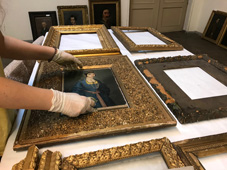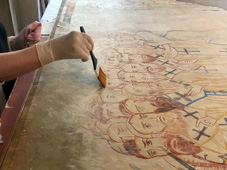
Renewal and restoration of collections at Shalva Amiranashvili Museum of Fine Arts
By Mariam Chanishvili
Wednesday, July 17
Georgian National Museum spreads information regarding the ongoing activities in the Shalva Amiranashvili Art.
The collections and funds stored in the Georgian National Museum are not in danger and cannot be threatened, as they are taken care of according to the safety norms of the collection and maintenance of cultural heritage monuments. This process is transparent and involves many interested parties.
At present, the process of reconciliation-scheduling, monitoring, and planning of restoration and renewal of collections is taking place at the museum. The items selected for restoration are placed in the Restoration Laboratory of Art Museum for reconstruction, fixation or purification.
Although the Hall of Temporary Exhibitions is closed at the museum, collections will be available to the visitors and the museum staff is mobilized to continue exhibitions and activities.
Collections of art museums are periodically exhibited at the Sighnaghi Museum and National Gallery of the National Museum. At this stage, the preparation for exhibition "Valerian Sidamon-Eristavi 130" is carried out, which will be hosted by Sighnaghi museum from July 17th.
Shalva Amiranashvili Museum of Fine Arts was established in Tbilisi in 1920 as the National Arts Gallery of Georgia. The museum houses the best-known samples of Georgian artwork. Different collections of the Museum preserve approximately sixty thousand objects.
The Museum is distinguished for its Georgian goldsmith pieces dated back to the 8th-19th Centuries. The most significant exhibits are the icon of Zarzma Monastery, the Chalice of Bedia, Anchistkhati and Khakhuli Triptychs, Processional Liturgical Crosses, etc. Cut-enamel, jewelry and art textiles exhibited are from 8th-15th cc.
The Museum stores the works of famous Georgian painters Niko Pirosmanishvili, Lado Gudiashvili, Elene Akvlediani, David Kakabadze, and others. The Museum also hosts collections of Russian, Western Europe and Oriental (mainly Persian) artworks.


